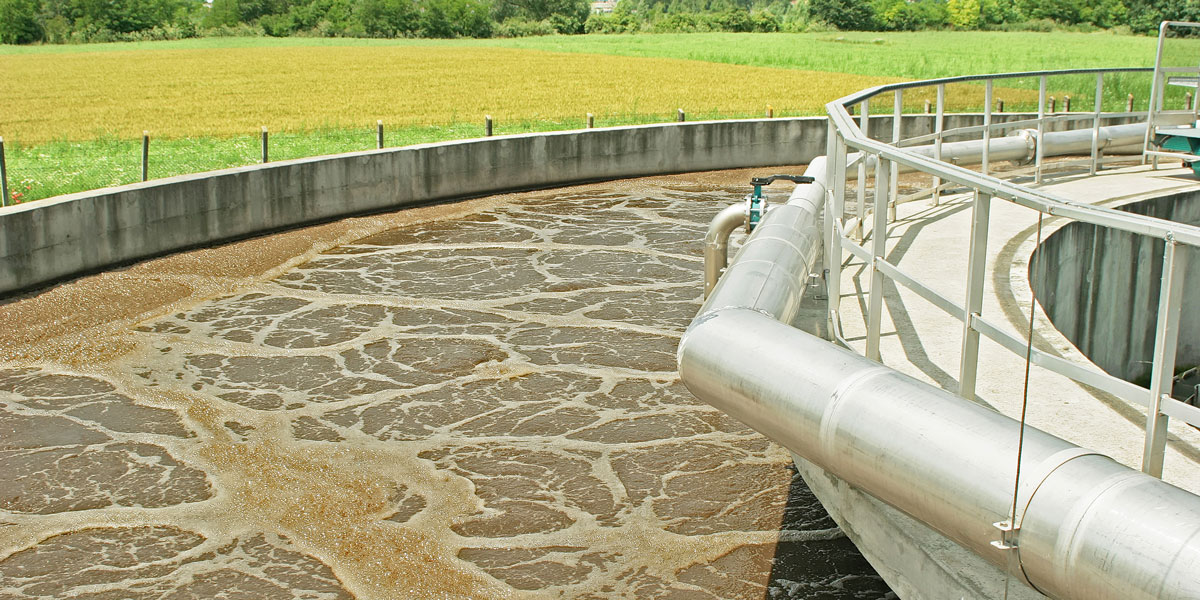
Findings point to previously unknown way that bacteria may become resistant to life-saving antibiotics
Antibiotic-resistant genes that have been inserted into genetically modified food are able to withstand conventional wastewater treatments.
The findings, contained in a research paper published recently in the journal, Biotechnology and Bioengineering (see abstract below), might point to a previously unknown way that bacteria may become resistant to life-saving antibiotics. The work is based on graduate work done at Duke University by Courtney Gardner, now an assistant professor in Washington State University's (WSU) Department of Civil and Environmental Engineering. She, along with Professor Tim Ginn in the Department of Civil and Environmental Engineering, have recently received a 3-year, USDA grant to continue the research.
Antibiotic resistance, which bacteria adopt in response to interactions with the drugs, is increasing around the world and threatens the ability to treat many common infections and diseases.
“We determined that extracellular DNA released from digestion appears to be ubiquitous in wastewater treatment in the U.S. – it’s much more persistent in the environment than we originally thought,” said Gardner. “Historically, I think it’s likely that this probably has contributed to the spread of antibiotic resistance in the environment.
“The magnitude of that contribution is still unknown — it is something we are trying to determine,” she added.
Unlike in Europe, which has largely banned the cultivation of genetically-modified crops for human consumption, GMOs are a common part of the food supply in the United States. Although the practice is becoming less common, companies have in the past added antibiotic resistant genes in their modifications as a helpful marker to differentiate genetically modified plant cells. About 130 lines of genetically modified crops contain such genes. Researchers have found that when people eat these foods, the incorporated genetic material moves through the digestive system, and that these genes can be released into the environment, including into wastewater treatment plants.
Meanwhile, half of the biosolids produced in the US after wastewater treatment are used as agricultural fertilizers every year, providing a potential pathway for moving the antibiotic resistant genes and bacteria through the environment.
In the new study, funded by the National Science Foundation, the researchers added antibiotic resistant genes to reactors to mimic the most common wastewater treatment for 30- and 60-day treatments that generate class A biosolids. To the mix, they added common antibiotics, such as penicillin, that are also often found in wastewater.
The researchers found that fragments of antibiotic resistance genes, especially longer strands, persisted through the treatment process. They believe that the DNA strands latch onto particles in soil or sediment in the digesters. There they lie protected from the processes that generally kill microbes and, instead, become a reservoir of genetic material.
Furthermore, the researchers found that the genes appeared to be taken up by bacteria in the sludge. The researchers theorize that the bacteria in sewage, such as staphylococcus, are stressed when they encounter antibiotics. By picking up the strands of antibiotic-resistant DNA, they gain a selection advantage.
In their new study, Gardner and Ginn will now be tracking and modeling the long-range transport of antibiotic resistant genes in agricultural fields. They will also be studying silencing RNA molecules, which are used in modern genetically modified crops to silence undesirable crop traits. The researchers want to know whether the remnant genetic material from silencing RNA molecules might bind with other bacteria in the environment to unintentionally silence desirable traits.
“Our concern from a genetic and bacterial standpoint is that there are probably some non-target matching sequences between the silencing RNA and environmental microbes and that it could cause the loss of a gene and possibly a functional gene,” said Gardner.
Source: Washington State University
https://news.wsu.edu/2019/10/18/researchers-find-persistence-antibiotic-resistant-gmo-genes-sewage-sludge/
---
Examining the behavior of crop‐derived antibiotic resistance genes in anaerobic sludge batch reactors under thermophilic conditions
Courtney M. Gardner, Savannah J. Volkoff, Claudia K. Gunsch
Biotechnology and Bioengineering 2019;116:3063–3071
https://onlinelibrary.wiley.com/doi/pdf/10.1002/bit.27134
Abstract
The consumption of transgenic crops and their by‐products has become increasingly common in the United States. Yet, uncertainty remains regarding the fate and behavior of DNA within food matrices once it exits the digestive track and enters into wastewater treatment plants (WWTPs). Because many transgenic crops have historically contained antibiotic resistance genes as selection markers, understanding the behavior and uptake of these transgenes by environmental microbes is of critical importance. To investigate the behavior of free transgenic crop DNA, thermophilic anaerobic batch reactors were amended with varying concentrations of transgenic crop genes (i.e., LUG, nptII, and bla) and the persistence of those genes was monitored over 60 days using quantitative PCR. Significant levels of nptII and bla were detected in extracellular DNA (eDNA). Furthermore, LUG maize marker genes were also detected in the control reactors, suggesting that other crop‐derived transgenes contained within digested transgenic foods may also enter WWTPs. Possible bacterial transformation events were detected within the highest dose treatments at Days 30 and 60 of incubation. These findings suggest that within the average conventional digester residence times in the United States (30 days), there is a potential for bacterial transformation events to occur with crop‐derived transgenes found in eDNA.










